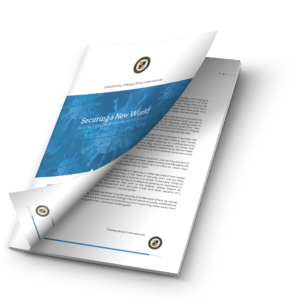What is the SolarWinds Supply Chain Attack?
SolarWinds, the Austin-based cybersecurity firm, found itself in the middle of a catastrophe due to internal security lapses. The firm recently earned headlines for making it to the list of unsuspecting service providers targeted for its elite supply chain. A week ago, the popular Cybersecurity firm confirmed falling victim to a supply chain attack, which was quite a coup for the threat actors.
In its statement, SolarWinds confirmed two major vulnerabilities — SUNBURST and SUPERNOVA — which we shall discuss in a while. Before we dig deeper into how the threat actors pulled it off, you need to know what the Orion platform is. Simply referred to as ‘Orion’, it is the flagship IT Monitoring and Management platform of SolarWinds.
It facilitates the implementation and scaling of the various security applications offered by SolarWinds. You can look at it as the base application used by clients to manage resources. Now that’s precisely why threat actors used it as a gateway to gain entry into the private networks of the Cybersecurity firm’s customers.
Who is responsible for the SolarWinds Supply Chain Attack?
According to Reuters, a researcher by the name Vinoth Kumar is said to have warned SolarWinds about its weak password for the update server almost a year ago. The password ‘solarwinds123’ was easy and could have been cracked with a basic Bruteforce application. While that highlights the potential flaws in the internal security system of SolarWinds, researchers state that it wasn’t the source of the current crisis. So what really happened?
Let’s find out!
How Did the SolarWinds Breach Happen?
Like any other IT service provider, SolarWinds released timely updates for its base application, Orion. However, the updates 2019.4 through 2020.2.1 which were released between March and June 2020 included malicious code that the cybercriminals inserted. Basically, “legit” updates were duly signed and released by SolarWinds had two major vulnerabilities, which Security Experts refer to as SUNBURST and SUPERNOVA.
The SUNBURST vulnerability, which SolarWinds confirms to be present in the 2019.4 HF 5, 2020.2 with no hotfix installed, and 2020.2 HF 1 versions create a backdoor that transmits data via the HTTP protocol and then intercepts it. The other vulnerability SUPERNOVA isn’t embedded within the Orion updates but is a distinct malware that tries to mimic SolarWinds’ proprietary products. Through this, the cybercriminals impersonated SolarWinds to gain unauthorized access.
Until a week ago, SolarWinds remained oblivious to the breach, while its unsuspecting clientele continued to download the trojanized updates and the malware. It is safe to assume these two vulnerabilities may have adversely affected thousands of Orion users.
This is the same pattern followed in the Asus supply chain attack, wherein the OS update was corrupted. However, this security breach could be a lot more damaging because of the Austin-based cybersecurity firm’s high-profile supply chain.
Let’s try to ascertain the extent of damage this supply chain attack may have caused.
How Bad Is It?
Supply chain attacks usually affect a long list of entities, and it comes as no surprise that over 18,000 SolarWinds customers might have suffered because of this attack. The shocking part is the callousness of leaders in not planning and implementing basic strategic defensive measures. This is highlighted by the fact that several critical US government departments all engaged the same vendor — SolarWinds.
The affected Government departments and agencies include the US Treasury, Pentagon, Homeland Security, and sources have also stated that nuclear programs which come under the US Department of Energy may have been a target.
While many U.S. intelligence officials were quick to blame Russia for the attack, there could be others involved as well. To date, neither the US government nor any affected companies have publicly said which nation-state they think is responsible. There’s still a lot we do not know. Recently, SolarWinds removed quite a few clients from the list of customers posted on its official website, which is probably to protect their best interests. Several other measures have also been implemented, but the extent of damage is still unknown.
Is My Organization at Risk?
In a bid to curb the mess created by hackers, SolarWinds has removed the potentially dangerous software builds from its download sites.
Organizations that have downloaded the SolarWinds malicious updates or malware remain vulnerable and must act fast. Your action depends on the update you may have downloaded.
What Should I Do?
If you have been a victim of the SolarWinds Supply chain attack, start by figuring out which update version you have currently installed. You can do that by going to the control panel and navigating to the ‘installed updates’ section. You then need to uninstall the malicious ones and download the latest versions of Orion, which would be the 2020.2.1 HF 2 or 2019.4 HF 6.
An even more effective measure would be to uninstall all the SolarWinds applications and reinstall them with the secure new versions. As the new version includes the security patches required to counter both the SUNBURST and SUPERNOVA vulnerabilities, it ensures better security.
The Big Takeaway from the SolarWinds Breach
Don’t look at the Solarwinds hack in isolation. Look at every one of your vendors that can push updates into your environment.
David Wolpoff, CTO of cybersecurity firm Randori
According to David Wolpoff of Randori “For security leaders, this is a good opportunity to reflect on their reliance and trust in technology solutions. These breaches are reminders of unseen risk debt: Organizations have a huge amount of potential harm built up through their providers that typically isn’t adequately hedged against… Don’t look at the Solarwinds hack in isolation. Look at every one of your vendors that can push updates into your environment.”
Nothing online is 100 percent secure, so the element of risk cannot be entirely removed. Since Organizations and Government agencies cannot survive without third-party vendors — which exposes them to the risk of supply chain attacks — the only prudent measure would be to diversify vendors to perform critical functions such as cybersecurity. Although it does not entirely eliminate the risk of a supply chain attack, it definitely distributes the risk across multiple vendors. This minimizes the amount of damage any single supply chain attack can cause. When disaster does strike, it pays to have a partner who can help you make sense of the chaos and chart a clear path forward. That’s why, for over 30 years, Chesley Brown has dedicated ourselves to helping organizations anticipate and navigate risk before it becomes a crisis. If you have serious questions about your security, our experts are always here to help.
Sign up!
For industry-leading guides and analysis sign up for our blog below.
Latest News
5 Tips for Creating Better Crisis Management Plans
Like a lot of people, you may be wondering what comes next for your business or organization following the Coronavirus outbreak (or any other crisis for that matter). Well, you’ve come to the right place.…
FREE DOWNLOAD Securing a New World: Security, COVID-19, and Boots on the Ground
There can be no argument that technology has infiltrated virtually every aspect of daily life for the vast majority of people and businesses across the world. Technology is woven into the social fabric of everyday life. It monitors our movements, our interests, our purchasing power, our locations, habits, our risk to insurers, our body chemistry, and health. Our images are captured overtly and unknowingly 1000’s of times daily. It captures the best of us in amazing acts of heroism and human interaction, and it captures the worst of us; for accountability and delivery of justice.
When it Comes to Corporate Espionage, Harvard’s Dr. Lieber is Just the Tip of the Iceberg
When it Comes to Espionage Harvard’s Dr. Lieber is Just the Tip of the Iceberg From Chesley Brown International By Dell Spry Renowned Harvard Professor Arrested for Lying About Connection to China. Feb 5th, 2020…
Chesley Brown Launches Initiative to Fight Human Trafficking
Chesley Brown Launches New Initiative to Fight Human Trafficking From The Chesley Brown Group Risk Management [dpArticleShare] Chesley Brown, the security management experts, announced today a new training initiative to provide support to victims, families,…
Spotlight: Bryan Taylor Promoted to Vice President
Chesley Brown Spotlight: Bryan Taylor Promoted to Associate Vice President From Chesley Brown International Employee Spotlight [dpArticleShare] Chesley Brown is excited to introduce our newest Associate Vice President Bryan Taylor. Bryan has been with Chesley…







